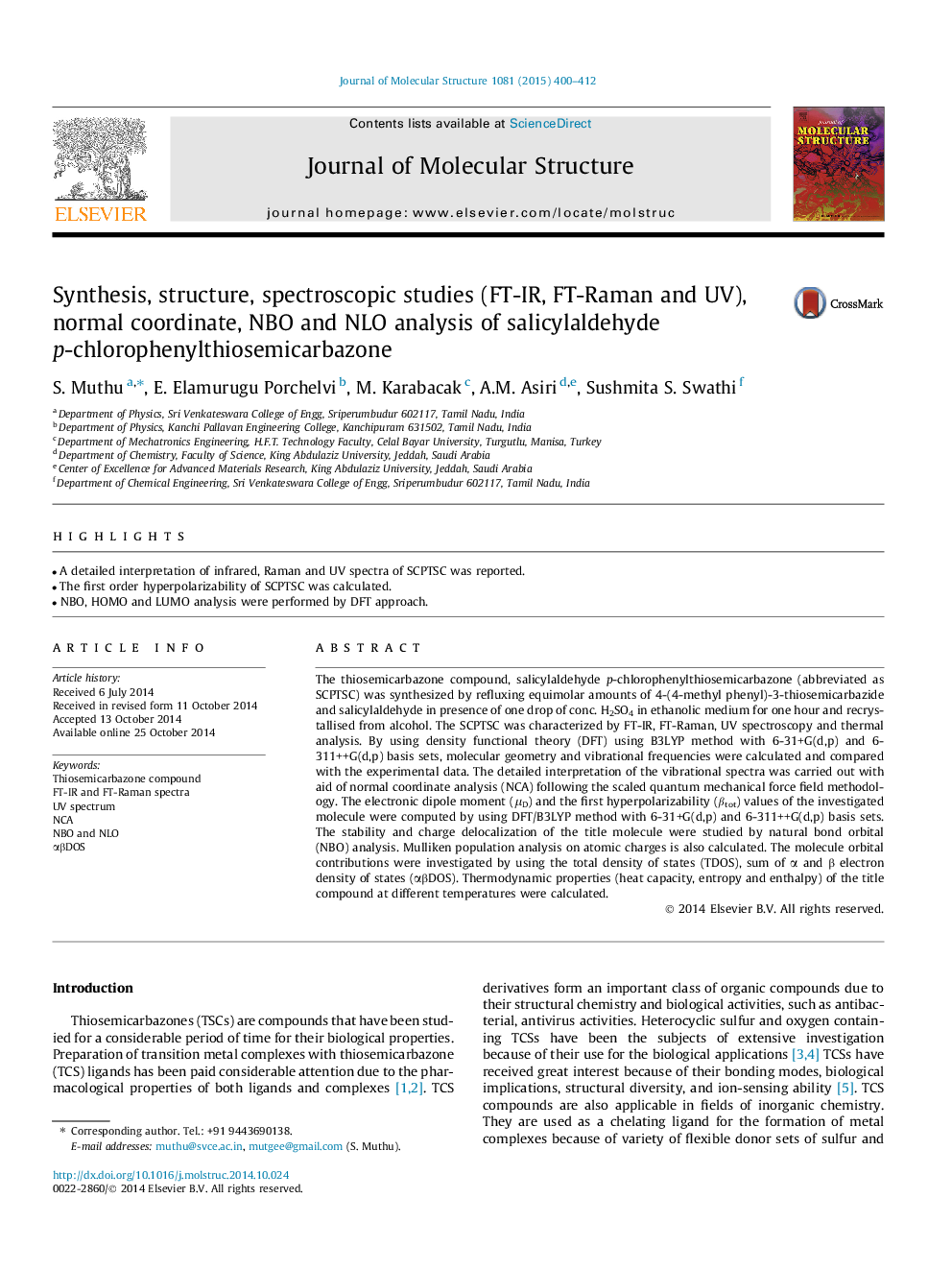| Article ID | Journal | Published Year | Pages | File Type |
|---|---|---|---|---|
| 1408351 | Journal of Molecular Structure | 2015 | 13 Pages |
•A detailed interpretation of infrared, Raman and UV spectra of SCPTSC was reported.•The first order hyperpolarizability of SCPTSC was calculated.•NBO, HOMO and LUMO analysis were performed by DFT approach.
The thiosemicarbazone compound, salicylaldehyde p-chlorophenylthiosemicarbazone (abbreviated as SCPTSC) was synthesized by refluxing equimolar amounts of 4-(4-methyl phenyl)-3-thiosemicarbazide and salicylaldehyde in presence of one drop of conc. H2SO4 in ethanolic medium for one hour and recrystallised from alcohol. The SCPTSC was characterized by FT-IR, FT-Raman, UV spectroscopy and thermal analysis. By using density functional theory (DFT) using B3LYP method with 6-31+G(d,p) and 6-311++G(d,p) basis sets, molecular geometry and vibrational frequencies were calculated and compared with the experimental data. The detailed interpretation of the vibrational spectra was carried out with aid of normal coordinate analysis (NCA) following the scaled quantum mechanical force field methodology. The electronic dipole moment (μD) and the first hyperpolarizability (βtot) values of the investigated molecule were computed by using DFT/B3LYP method with 6-31+G(d,p) and 6-311++G(d,p) basis sets. The stability and charge delocalization of the title molecule were studied by natural bond orbital (NBO) analysis. Mulliken population analysis on atomic charges is also calculated. The molecule orbital contributions were investigated by using the total density of states (TDOS), sum of α and β electron density of states (αβDOS). Thermodynamic properties (heat capacity, entropy and enthalpy) of the title compound at different temperatures were calculated.
